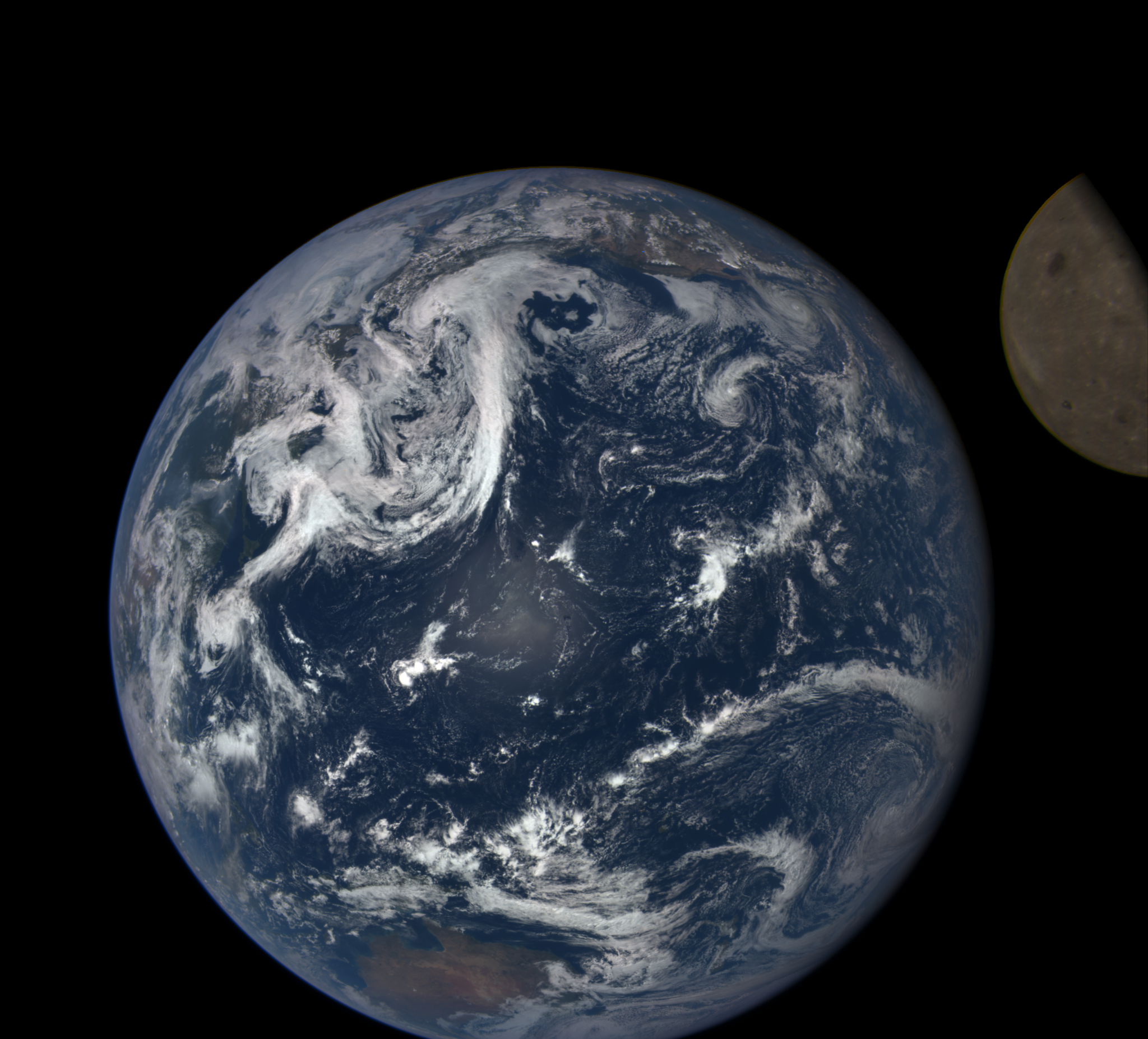Tamás Várnai, research associate professor at UMBC’s Joint Center for Earth Systems Technology, has been instrumental in determining the source of unusual flashes of light spotted in images retrieved by an instrument on the National Oceanic and Atmospheric Administration’s Deep Space Climate Observatory (DSCOVR) satellite.
Rather than lightning or reflectance from Earth’s surface, the research team determined the source was reflections off of horizontally-oriented ice crystals embedded in clouds at very high altitudes. This unexpected finding was recently published in Geophysical Review Letters and garnered widespread news coverage.
Similar glints had been spotted in 1993 by famed scientist Carl Sagan, who noticed flashes of light in images taken by NASA’s Galileo satellite. He only spotted them over water, suggesting they could be easily explained by reflections off the water’s highly reflective surface. Alexander Marshak, a scientist at the NASA Goddard Space Flight Center, made similar observations last year, but, unsatisfied with Sagan’s explanation, he pulled in colleagues, including Várnai, to investigate further.
Várnai developed an algorithm to sift through thousands of satellite images looking for the bright flashes, eventually turning up 866 glints between June 2015 and August 2016. Várnai’s algorithm detected flashes above both land and water, suggesting their source was not simply reflectance off Earth’s surface, as land isn’t reflective enough to create the flashes.
Várnai’s algorithm also compiled statistics on the location of the flashes. All of them were in places where the angle between the sun and Earth was the same as between the instrument and Earth. That meant that the flashes were caused by reflections from horizontal objects, even if not from Earth’s surface.
Finally, one more key observation enabled the team to solve the puzzle: the flashes were located at the high altitudes where clouds were found. This led researchers to conclude that the reflections were coming from high-altitude ice crystals in the clouds themselves.
“I’m excited about this, because the results show that it is possible to identify clouds containing horizontally-oriented ice crystals even from deep space,” says Várnai. “Such observations can help determine how common these crystals are, and whether they significantly impact the amount of sunlight that passes through clouds and warms the Earth.”
Those observations could have implications for studying climate change, because clouds are still one of the least understood, yet pervasive, factors contributing to Earth’s energy balance.
Next, the team plans to “examine the number, size, and brightness of detected flashes to learn about the prevalence and properties of horizontal ice crystals,” Várnai says. Combining that data with observations from other sources and weather models may reveal more about which conditions tend to generate the ice crystals in Earth’s atmosphere.
There are also possible applications beyond Earth. Várnai explains, “Detecting glints may help in using future satellites, such as the James Webb Telescope scheduled for launch next year, to characterize exoplanets orbiting distant stars.”
Read the original article in Geophysical Review Letters by Marshak, Várnai, and Alexander Kostinski of Michigan Technological University: “Terrestrial glint seen from deep space: Oriented ice crystals detected from the Lagrangian point.”
This research was featured by Phys.org, CBS News, Weather.com, Science Daily, Orlando Sentinel, Canada Journal, and others.
Image: Earth and the Moon, as seen by NASA’s Enhanced Polychromatic Imaging Camera (EPIC) on NOAA’s DSCOVR satellite; available here from NASA.

